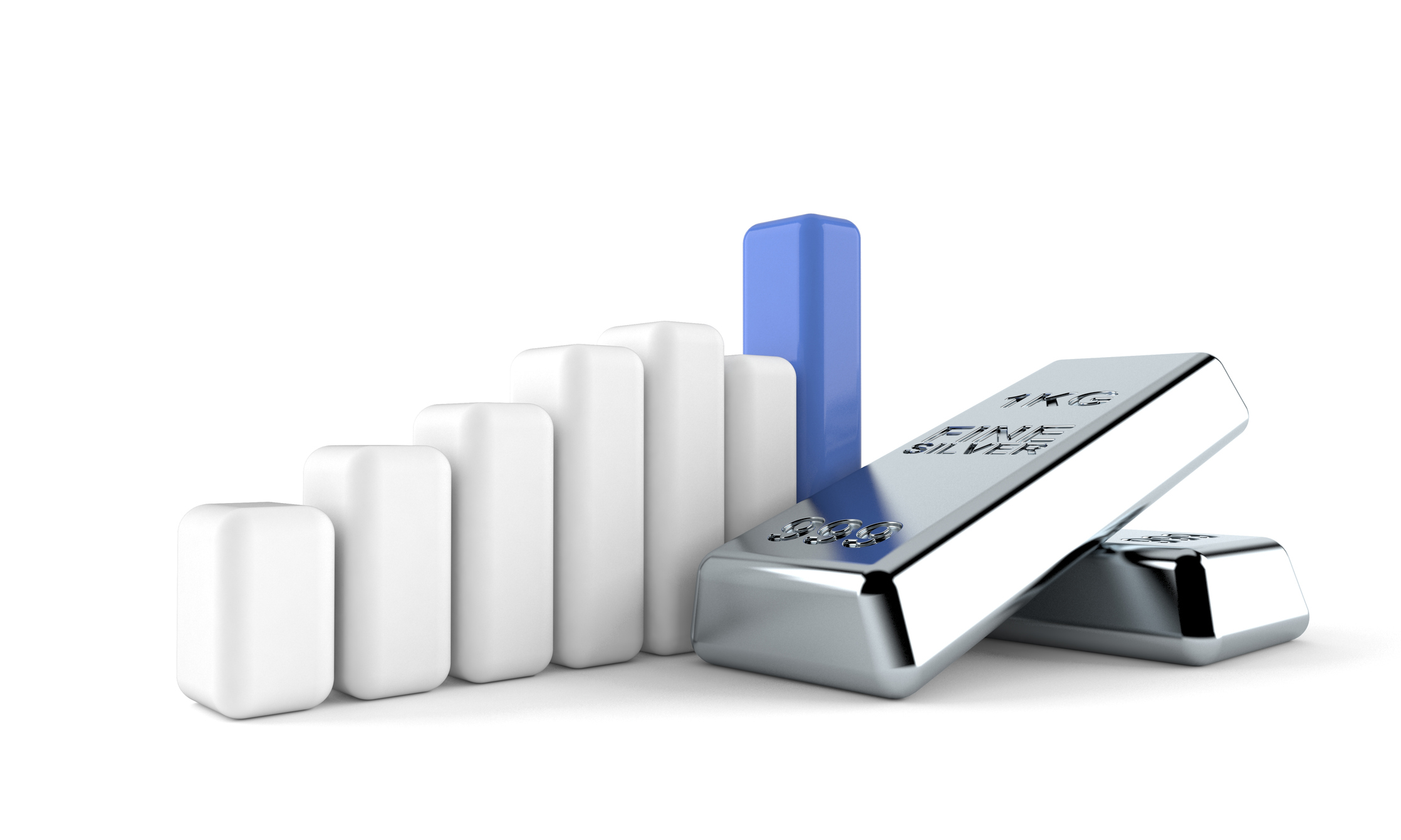Is now a good time to invest in silver?
Silver is set to end 2025 at record highs and has outperformed gold during the year. Is now a good time to invest in the precious metal?


The price of silver has nearly doubled during the second half of 2025, making it one of the top performing assets of the year.
Those who chose to invest in silver at the start of 2025 have seen their investment rise by over 140% through the year. That means silver investors have netted greater returns even than those who invested in gold during a standout year for precious metals.
Silver hit a new all-time high on 28 November but has climbed relentlessly since, gaining 18% between 28 November and 23 December. The price of silver hit its latest all-time high of $72.7 per ounce on the morning of 24 December,
MoneyWeek
Subscribe to MoneyWeek today and get your first six magazine issues absolutely FREE

Sign up to Money Morning
Don't miss the latest investment and personal finances news, market analysis, plus money-saving tips with our free twice-daily newsletter
Don't miss the latest investment and personal finances news, market analysis, plus money-saving tips with our free twice-daily newsletter
“Worries about a growth slowdown and persistent inflation have provided a tailwind for alternative investments like gold and silver in 2025,” said Tom Stevenson, investment director at Fidelity International.
You may be deciding where to invest for 2026. Despite its recent gains, it is worth considering whether now is a good time to invest in silver.
One interesting aspect of the recent silver rally is that it has coincided with a surge in the gold price. While there are overlaps in the two precious metals, the reasons to invest in silver are distinct from gold.
Why invest in silver?
While silver, like gold, is a precious metal with a rich history of usage in coinage, in the modern era it is silver’s industrial qualities that have the greatest bearing on its price.
“Historically, there would have been a closer relationship between silver and gold in their end uses,” Robert Crayfourd, portfolio manager of the Golden Prospect Precious Metals investment trust, told MoneyWeek. “But today, silver is over 50% industrial, and that’s primarily going into high-end electronics.”
Anything you can see around you with an on/off switch likely contains silver.
Other industrial use cases include brazing and alloys, the chemicals industry and medical equipment – the latter benefiting from the fact that bacteria cannot grow on silver, an inert ‘noble’ metal.
For these reasons, silver sometimes tracks action in copper prices more than gold, though this hasn’t been the case in recent weeks.
Many of the same drivers that impact the gold price – financial stress, interest rates, inflation expectations and policy decisions – also influence silver. “You can think of silver as gold on crack,” says Adrian Ash, director of research at BullionVault. “More irrational, more volatile, more dangerous; but also more fun if you’re looking for risk.”
Is silver a good investment now?
Silver is at the heart of boom industries like clean energy, artificial intelligence (AI) and defence.
The Silver Institute, an industry body for the silver industry, and advisory firm Oxford Economics, published a report titled ‘Silver Demand Forecast to Expand Across Key Technology Sectors’ in December. It highlighted three major growth industries that are driving silver demand: solar photovoltaics (i.e. solar panels), electric vehicles (EVs) and AI data centres.
Silver is an important material for all three industries and their pace of growth is fuelling rapidly rising demand for silver.
The supply of silver may struggle to keep pace. While demand for silver is expected to have fallen around 4% in 2025 thanks to tariff uncertainty, it still lags supply, which The Silver Institute expects to remain flat.
That will make 2025 the fifth successive year in which demand for silver has outweighed supply.
Between 2016 and 2024 total annual demand for silver increased from 992 million ounces to 1.16 billion. Over the same period, supply fell from 1.06 billion ounces to 1.02 billion. In other words, where there was a surplus eight years ago, there is now a deficit.
The boom industries are the main drivers of increasing demand. Total industrial silver demand increased from 491 million ounces in 2016 to a record 680 million ounces in 2024.
One thing to keep in mind when considering investing in silver, though, is its volatility. Futures and options speculators call it “the devil’s metal”, says Ash, on account of its propensity to make sudden, sharp moves just as they think they’ve figured it out.
So while a persistent supply deficit has applied upward pressure to silver prices, investors should be aware that silver is subject to large price swings and has the potential to leave investors out of pocket.
Should you invest in silver or gold?
While gold lacks silver’s range of industrial applications, it has historically been a more reliable store of value.
Their historical significance as precious metals used in coinage means that gold and silver are often directly compared by investors. The gold-silver ratio is reckoned to be the oldest continually-tracked financial ratio in existence. It describes how many ounces of silver are required to buy one ounce of gold. The higher its number, the more expensive gold is currently, compared to silver.
The gold-silver ratio is approximately 63 at the time of writing, having fallen from as high as 104 in April at the height of tariff turmoil. Global economic instability tends to favour gold as investors seek it out as a “safe haven” asset, while silver prices suffer from the threat of an economic slowdown (which would dampen demand for silver’s industrial uses).
Prior to this decade, anything above 80 would have been considered high, indicating that gold was overvalued and that it’s time to invest in silver.
But in recent years it has been more common for gold to trade at higher values relative to silver.
“Central banks have been the primary driver [of precious metal demand],” said Crayfourd. “Central banks are dealing with huge amounts of money and they want a lower volume, so gold is perfect… that has justified gold trading to a higher ratio.”
How to invest in silver
There are various ways to invest in silver.
You can, in theory, buy physical silver in the form of silver coins or bars. These, however, incur 20% VAT, and also include 10-15% dealing spreads on top.
“Silver’s popularity is likely to keep increasing, along with the demand for silver coins for investment and keepsake purposes,” said Faisel Ali, founder and managing director of Gold Bank London. “Investors still lean towards bullion coins, but we are seeing more and more interest in themed and commemorative coins, so things that actually mean something to the buyer.”
Specialist custodians can enable you to avoid sales tax while cutting this trading spread too. Using a custodian should also save the expense and risk of storing and insuring physical silver on your own property, as they will normally store your silver in a professional level vault.
Alternatively, you can gain exposure to movements in silver prices by buying a physical silver exchange-traded commodity (ETC). An ETC behaves similarly to an ETF, but it tracks the spot price of a particular commodity, as opposed to a bundle of stocks. The iShares Physical Silver ETC (LON: ISLN), for example, tracks the spot price of silver.
Buying shares in silver miners is another way to invest in silver. However, bear in mind that this is a different and arguably riskier investment than in physical silver or a tracker for the spot price, because while changes in the silver price will impact the share prices of silver miners, they are also exposed to other, unrelated factors, such as company mismanagement.
A combination of both these approaches would be to buy an ETF which comprises silver miners, such as the Global X Silver Miners UCITS ETF (LON:SILV). While doing so may dilute some of the company risk associated with buying individual silver miners, this should still be considered a distinct play from investing in physical silver (either directly or via an ETC).
Golden Prospect Precious Metals (LON:GPM) is an investment trust that invests in a diverse portfolio of precious metal miners. As of 30 September, around 11.8% of its portfolio projects primarily mine silver, compared to 85.8% for gold, 1.2% for platinum group metals and 1.1% for base metals.
Get the latest financial news, insights and expert analysis from our award-winning MoneyWeek team, to help you understand what really matters when it comes to your finances.

Dan is a financial journalist who, prior to joining MoneyWeek, spent five years writing for OPTO, an investment magazine focused on growth and technology stocks, ETFs and thematic investing.
Before becoming a writer, Dan spent six years working in talent acquisition in the tech sector, including for credit scoring start-up ClearScore where he first developed an interest in personal finance.
Dan studied Social Anthropology and Management at Sidney Sussex College and the Judge Business School, Cambridge University. Outside finance, he also enjoys travel writing, and has edited two published travel books.
-
 ‘Why I have ditched my Help to Buy ISA for cash savings and the stock market’
‘Why I have ditched my Help to Buy ISA for cash savings and the stock market’Without the 25% bonus, my Help to Buy ISA is effectively redundant, says MoneyWeek writer Sam Walker.
-
 Is your inheritance tax allowance cut if you sell to downsize or sell your home to pay for care?
Is your inheritance tax allowance cut if you sell to downsize or sell your home to pay for care?Downsizing relief is a little-known benefit that could save your loved ones tens of thousands of pounds in inheritance tax after you’ve died.